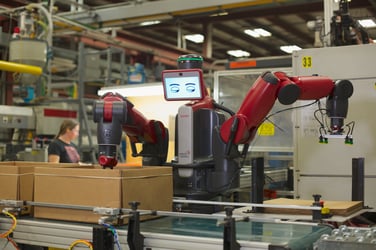Robot Vacuum Cup Grippers: Top 5 Problems

Posted on Feb 14, 2014 in Robot Grippers
2 min read time
Vacuum grippers are a very widely used type of robotic gripper but for some applications, they may present challenges. Here are the top 5 problems with vacuum robot grippers.

1. Issues with varied surface types
-
Curvy and sharp angled surfaces might not have sufficient flat surface contact to have enough of the cup exerting the required force.
-
Porous or corrugated surface can prevent proper, repeatable suction.
-
Dirty surface can clog the airlines.
2. Vacuum robot grippers can leave marks on some surfaces
In some cases (think glass or mirror), these marks will need an additional step in the manufacturing process, increasing cost and manufacturing time.
3. Vacuum robot grippers are compliant
This can prevent the robot from applying a sufficiently strong contact between the part being held and the workpiece or decrease the repeatability.
4. Vacuum robot grippers need custom end-of-arm tooling to support them
To support different cups, you need to come up with a custom end-effector usually made of metal extrusion. If the part is complex, the design of the end-effector can require a fair amount of trial and error. If you have different parts, or parts that evolve during the process (think bended sheet metal), the design of these end-effectors can be costly and unpredictable.

5. The usual problems with compressed air
As we mentioned previously in an article about pneumatic robot grippers, compressed air is not very energy efficient and is being phased out wherever possible. Also, compressed air can introduce dirt into the environment that might not be suitable for some manufactured goods.
So, in some applications it might make sense to use these grippers. However, if you are using this type of gripper when grasping numerous different part geometries or surfaces, then it might make less sense to look at what other types of grippers are available.


.jpg)





Leave a comment